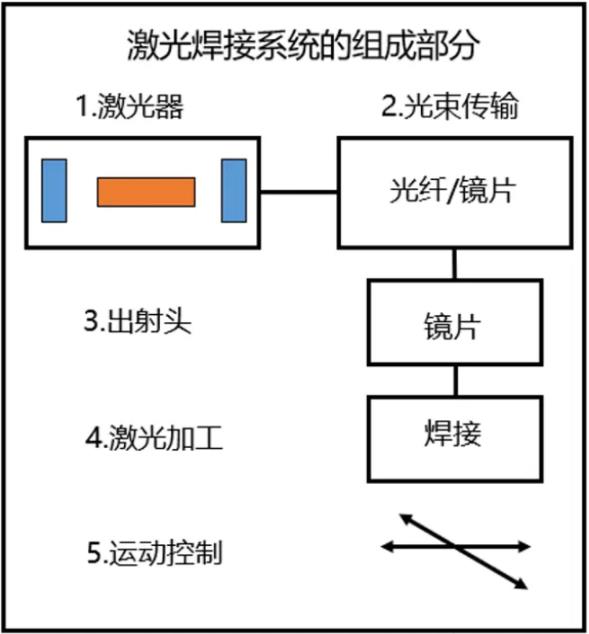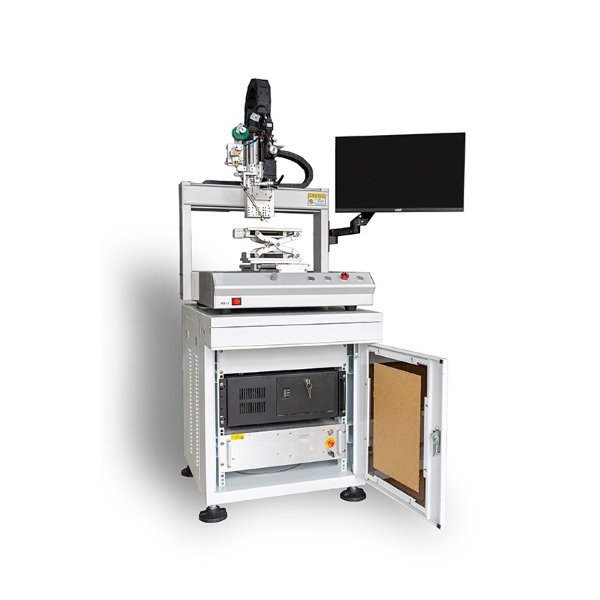Application of Laser Welding in Hermetic Sealing Components
Industries such as aerospace, military, and medical extensively utilize hermetic sealing components to protect internal precision devices from environmental factors, thereby improving the reliability and service life of critical electronic equipment. Typically, hermetic sealing is the final crucial step in the entire manufacturing process. If quality defects occur, the entire product may be rendered unusable. Although some defects can be reworked, the associated costs are extremely high. Therefore, selecting the appropriate sealing method is vital when designing products for these industries. Several commonly used techniques for hermetic sealing include epoxy resin bonding, resistance welding, electron beam welding, and laser welding. Below, we will discuss the advantages and disadvantages of these technologies in detail.
Epoxy Resin Bonding
Epoxy resin encapsulation is convenient and fast, making it suitable for mass production with low costs and high efficiency. It has low requirements for the machining precision of the housing and cover plate. However, its drawback is that it cannot form an effective hermetic seal, as moisture can permeate through the epoxy resin, compromising its airtightness.
Resistance Welding
Resistance parallel seam welding is a reliable process that has been in use for many years, but it has several disadvantages. First, the process requires the welded materials to have high resistivity (such as Kovar), making it unsuitable for materials like aluminum or copper. Second, new electrodes must be preheated before welding production begins, and test samples are required to break in the electrodes. Additionally, resistance parallel seam welding can only be used for lap joints, which imposes limitations on product structure design.
Electron Beam Welding
Electron beam welding shares many advantages with laser welding, but it requires a vacuum chamber for operation, as welding must be performed in a vacuum environment. The process also generates X-ray radiation, necessitating proper shielding. If inert gas filling is required after welding, an additional sealing weld must be performed using another method.
Laser Welding
Compared to other welding processes, laser welding offers high reliability, concentrated heat input, a small heat-affected zone, minimal thermal distortion, high processing speed, non-contact welding, and the flexibility of CNC programming. To adapt to laser hermetic welding, several critical factors must be considered in product design to allow engineers to fully leverage the advantages of laser welding for hermetic sealing.

Schematic Diagram of Laser Welding System Composition
Laser Welding System
The laser beam emitted by the laser source is transmitted to the welding head or scanning galvanometer through standard optical components (hard light path) or optical fiber. When standard optical components are used, the laser is typically mounted above the welding head or galvanometer, with a 45° mirror directing the beam downward through a focusing lens onto the workpiece—though this configuration is now less common. More frequently, flexible optical fibers are employed to deliver the beam to the welding head or galvanometer, allowing the laser source to be positioned away from the processing area. Beam splitting techniques, including spatial and temporal division, enable a single laser source to supply multiple welding heads or galvanometers, reducing costs and improving efficiency.
A closed-circuit television (CCTV) monitoring system is generally required for laser welding systems. The CCD camera can capture images of the welding zone either coaxially with the laser beam through the welding head or via a separately positioned side-view lens. An electronically generated crosshair on the display aligns with the center of the laser spot, enabling precise positioning of the weld seam by adjusting the workpiece or optical components until the seam image coincides with the crosshair. The laser welding control system manages the motion of the workpiece or the deflection of the scanning galvanometer to execute the weld, incorporating settings for seam trajectory, laser parameters, shutter control, and shielding gas flow. Welding programs for different part types can be stored in the control system, allowing near-instantaneous product changeovers with minimal adjustments once process parameters are validated.
For hermetic sealing applications, the weld penetration depth is typically controlled between 0.3 and 1.5 mm, depending on the housing/cover dimensions, joint configuration, and material properties. The laser's ability to focus with micron-level precision ensures minimal heat-affected zones. However, reflective losses occur—particularly with highly reflective materials like aluminum, copper, and gold. Initial reflectivity is extremely high during the early welding phase, but as surface temperature rises and a molten pool forms, the absorptivity of liquefied metal increases by factors of 10 to 100 compared to its solid state, enabling successful weld completion.

Diagram of Desktop Temperature-Feedback Precision Laser Soldering System
The Songsheng Opto Laser Soldering System integrates a multi-axis servo module, real-time temperature feedback system, CCD coaxial positioning system, and semiconductor laser source. Through years of welding process refinement, Songsheng Opto has independently developed intelligent soft soldering software compatible with multiple file formats.
The system features an innovative PID online temperature regulation and feedback system, enabling precise constant-temperature soldering to ensure high yield rates and exceptional accuracy. With broad applicability, this product is suitable for both inline production and standalone processing.
Welding Process
Prior to laser hermetic welding, components are typically placed in a vacuum oven to remove moisture, usually requiring baking at 125°C for 8 to 24 hours. Therefore, the oven's capacity must be pre-matched with the production efficiency of the laser sealing process. Upon completion of baking, the oven is filled with inert gas to equalize internal and external pressure differences. The components are then transferred to the main chamber of a glove box for further assembly or immediate laser welding.
The components are clamped in welding fixtures, and the corresponding welding program is initiated based on the product. The fixture can be designed as a matrix to accommodate multiple component sets, thereby improving welding efficiency. For complex parts, spot welding is often performed prior to seam welding to secure the cover plate in position. The welding cycle may last from a few seconds to several minutes, depending on the seam length and the number of components being welded.
The welding process design must also account for factors such as the melting points, thicknesses, coatings, and seam dimensions of the cover plate and housing to determine the appropriate laser spot size. Based on heat dissipation capacity and material reflectivity, the spot's offset ratio is defined—generally, the spot should cover the seam while being biased toward the material with better heat dissipation and higher reflectivity. This ensures thermal equilibrium between the two materials and guarantees optimal welding results.
Summary
The design of laser hermetic sealing technology largely relies on the continuous accumulation of practical experience. When designing products, engineers must select appropriate materials and coatings based on specific product requirements, determine the joint structure, and fully leverage the advantages of laser welding—such as speed, reliability, and flexibility.
Contact: Mr.Xiao
Phone: +86-13385280662
E-mail: market001@whlaser.cn
Add: Room 02, Floor 5, Building 9, Gezhouba Sun City, No. 40, Gaoxin 4th Road, Donghu New Technology Development Zone, Wuhan